The 18,000ft² Boardman Performance Centre in Evesham, Worcestershire, was opened to the public in April 2018 and aims to service both professional athletes as well as ‘enthusiastic amateurs’. Alongside the wind tunnel, the facility also incorporates a retail store, a biomechanics suite and a physiology suite. With prices ranging from £150 to £695, depending on how in-depth you want to go with your session, it offers cyclists of any ability the chance to benefit from access to processes previously only available to elite-level athletes.
“Legend has it,” explains Kieron Salter, managing director, KWSP. “Chris [Boardman] said ‘what we need is a wind tunnel that you could use for the price of a curry to do some testing’. He must be eating expensive curries, but that’s how it was formed back in 2012.”
Shortly after this, TotalSim was bought in to help with air flow and aerodynamics. KWSP was later called in to provide engineering support, control systems, electrical integration and software development.
It took a further five years to find a customer that wanted to build a world-class, easily accessible wind tunnel facility specifically for cyclists. Boardman used his contacts at Boardman Bikes, which has been a fully-owned subsidiary of Halfords since 2014, to make the investment in a brand-new facility in Evesham.
“We started the design and installation of the Evesham tunnel in November 2017,” says Salter. “The main structure and the air line was built and shown to the public in April, so the actual construction period was relatively short.”
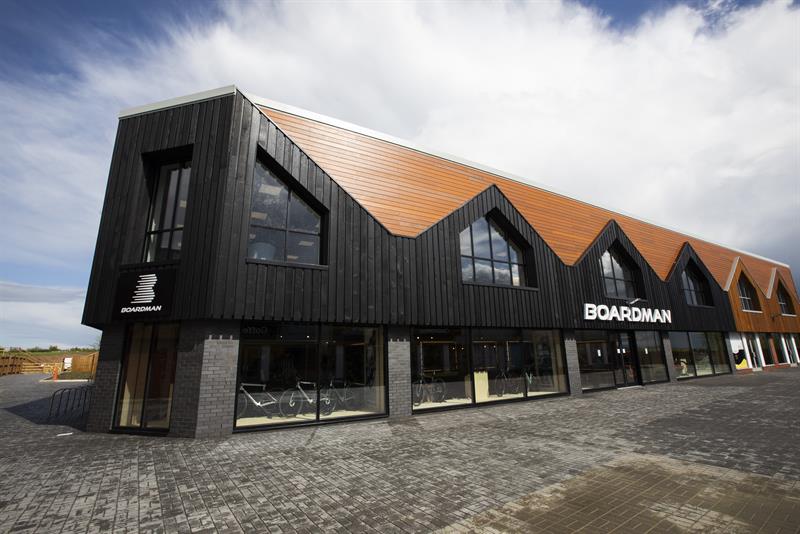 Until the tunnel was completed it couldn’t be tested, so for the last six months Sports Aero Solutions has been testing all the tunnel’s components – load cells, data acquisition systems, control systems and electrical systems. With the validation complete, the paying public have been able to use the facility since the beginning of October 2018.
Until the tunnel was completed it couldn’t be tested, so for the last six months Sports Aero Solutions has been testing all the tunnel’s components – load cells, data acquisition systems, control systems and electrical systems. With the validation complete, the paying public have been able to use the facility since the beginning of October 2018.
There are many different reasons for building a cycling-specific wind tunnel, but the biggest one is the cost.
“There are really only a few wind tunnels you can use, the Formula One tunnels like Williams, Mercedes or McLaren, there’s Southampton University’s wind tunnel and that’s really about it,” says Salter. “The amount of time available is so limited and is expensive. It’s thousands of pounds an hour as opposed to with our tunnel where it could be hundreds of pounds an hour.”
The costs and time allowed for testing in these motorsport wind tunnels are even more prohibitive – even for professional cycling teams – since they must be decommissioned as a motorsport wind tunnel and recommissioned for use for cycling. Additionally, they are built with a rolling road, which needs an attached platform to which the bicycle is fixed. This platform affects the airflow around the cyclist, which is also exacerbated by the fact that motorsport wind tunnels are designed to run at 150mph, rather than the more sedate speeds of 40-50mph at which cyclists travel. So, in effect, one is paying a lot of money for not a lot of testing time in a wind tunnel that is not working in its optimum operating window.
Another way in which costs can be cut is, instead of having a closed loop configuration where the air is circulated and turned, to build an ‘open jet’ tunnel. The footprint of a closed loop wind tunnel would be almost three times larger than an open jet tunnel. And, because of the lower speeds the air needs to travel through the Boardman open jet wind tunnel, it sits in a room measuring just 27 x 14 metres.
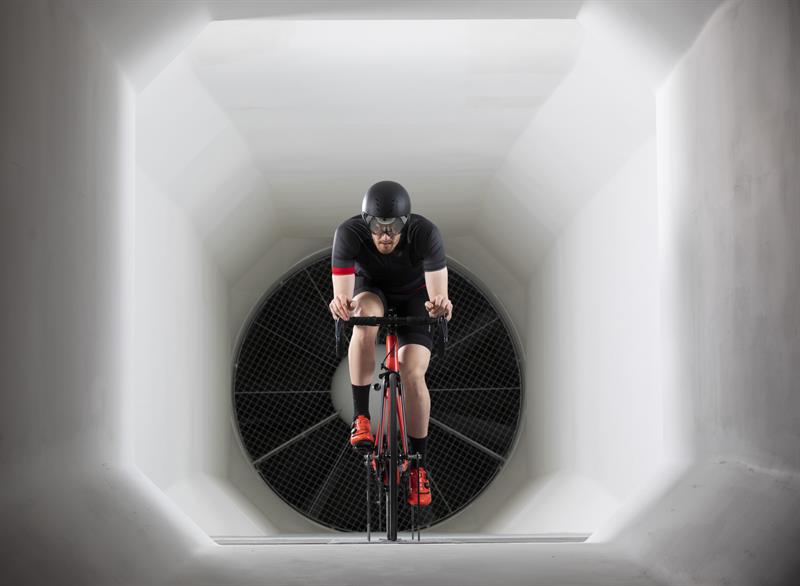 The fan is located at the rear of the cyclist and pulls air through a bell mouth section at the front, which is five times larger than the opening in front of which the cyclist sits. This helps speed the air to 22-25mph across the athlete. Before it reaches the athlete, the chaotic air from the room is channelled through three screens, two honeycombed ones and a final fine mesh, at each stage the airflow is straightened out and by the time it hits the athlete it is completely laminar and concentrated into a 2m x 2m area. Even while the fan is on there is no turbulence around the outside of the tunnel.
The fan is located at the rear of the cyclist and pulls air through a bell mouth section at the front, which is five times larger than the opening in front of which the cyclist sits. This helps speed the air to 22-25mph across the athlete. Before it reaches the athlete, the chaotic air from the room is channelled through three screens, two honeycombed ones and a final fine mesh, at each stage the airflow is straightened out and by the time it hits the athlete it is completely laminar and concentrated into a 2m x 2m area. Even while the fan is on there is no turbulence around the outside of the tunnel.
“Things have changed since motorsport tunnels were built, particularly around software and data acquisition systems,” explains Salter. “We’ve been able to strip it right back to being cost-effective.These wind tunnels don’t cost £20 million to build. They cost a million and a bit. A lot of that is because we haven’t got a rolling road, we don’t have very expensive proprietary software and data acquisition systems. We built our own (because you can now) relatively cost-effectively.”
Currently, Sports Aero Solutions is building a second wind tunnel at Silverstone Park, based on the one in Evesham, but with a more scientific focus. Though some development has been done in the last six months of validation at Evesham by professional sports teams and athletes, it is now a consumer-based operation. The Silverstone tunnel will comprise two tunnels, one for cycling, and other sports such as speed-skating, skeleton, running and wheelchair athletes; and the second for testing fabrics.
TotalSim’s managing director Dr Rob Lewis says: “Tapping into the world class, high-tech skills pool around Silverstone enables us to create a unique innovation incubator for companies in sports engineering and services which we predict will have global appeal. If we can pool the right things together then we believe that organisations will come from around the world to take advantage of the facility.”
The Silverstone facility is due to open in January or February 2019. It is hoped that the hub could be the start of a whole series of ventures around Silverstone to do with sports science, engineering and education.
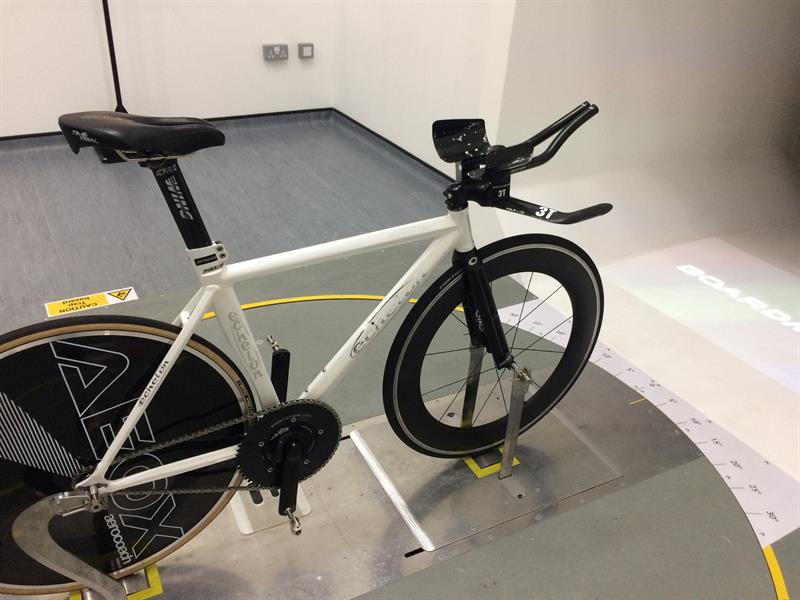 The software and control systems that both facilities use will be the same, however. The tunnel is designed to be operated with a Beckhoff control system. Instead of using a PLC system, the Beckhoff IPC system allows the tunnel’s operators to do all the data collection, including the basic wind tunnel operational parameters, wind speed and load cell numbers. That’s then fed into a bespoke LabVIEW based data acquisition and analysis tool developed by KWSP which includes a bespoke front-end interface.
The software and control systems that both facilities use will be the same, however. The tunnel is designed to be operated with a Beckhoff control system. Instead of using a PLC system, the Beckhoff IPC system allows the tunnel’s operators to do all the data collection, including the basic wind tunnel operational parameters, wind speed and load cell numbers. That’s then fed into a bespoke LabVIEW based data acquisition and analysis tool developed by KWSP which includes a bespoke front-end interface.
This data is brought together with data from the vision control system, which is made up of three GigE cameras. Of these, one looks at the frontal area; one looks from the plan view, down onto the cyclist; and one is side-on. Those images are all aligned with the data so at any point in the data stream the cyclist and the Boardman analyst can look at the drag from any one of those views.
An outline can be extrapolated from the data and overlaid on the live video feed to show the optimal position the cyclist should adopt in terms of optimum drag. This is then projected on to the floor of the wind tunnel in front of the athlete, so they can see the target position they’re trying to achieve as well as the graphs and metrics that back this up.
The bicycle itself is fitted to a circular platform in the centre of the test room right in front of the opening from the bell mouth section of the wind tunnel. The platform can accommodate any size of bicycle with an adjustable clamp for the front axle. Both axles are clamped to the platform, ensuring the wheels are in contact with rollers that are connected with a belt, so the front wheel turns at the same rate that the rear one is being driven. The whole platform can yaw up to 30° left and right to simulate the effect of side-winds.
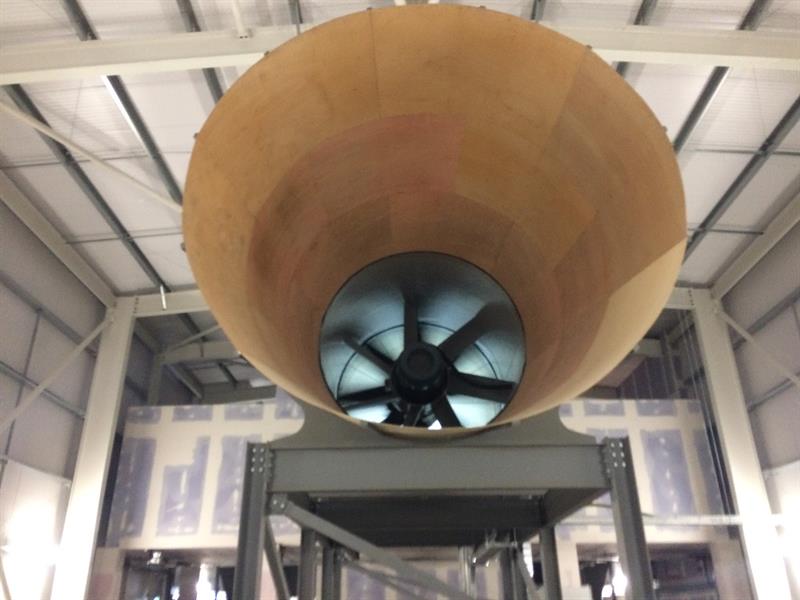 This platform is sat on top of a series of four load cells which measure, calibrate and cancel out the vertical force and moments caused by the athlete as they pedal. Salter adds: “At the back is a load cell that measures drag, there are also two side force ones because the air flow is never regular around the athlete and as we yaw it we’re able to take out the impact of side force.”
This platform is sat on top of a series of four load cells which measure, calibrate and cancel out the vertical force and moments caused by the athlete as they pedal. Salter adds: “At the back is a load cell that measures drag, there are also two side force ones because the air flow is never regular around the athlete and as we yaw it we’re able to take out the impact of side force.”
For athletes using the wind tunnel, accuracy is all-important. They want to know that the data they’re producing is applicable to real-life marginal gains on the track or road. What is important to Sports Aero Solutions to prove is that the results in the tunnel are repeatable.
Despite the fact that from day-to-day an athlete’s performance can be affected by many different factors, the data being collected must be as accurate as possible. So, how do you make sure of that repeatability?
“It’s a really high-tech solution,” Salter jokes. “We’ve got a roof box from Halfords that’s mounted in the wind tunnel and that’s our validation object. It’s always the same, and a really good, aerodynamic shape.
“We’ve validated that in the wind tunnel to get the correlation and we can put that same roof box back in and see if it’s still measuring the same number as it was last week or last year.
“Repeatability is very important; it doesn’t matter whether the number’s 8 or 9, what you don’t want to do is measure 8 and next day, with exactly the same kit, measure 9. If you’re looking for a trend of improvement you need to have that repeatability. The roof box test gives us a neutral test body that no one can argue with.”
Looking forward, the Silverstone facility is due to open in the first few weeks of 2019 and there are also plans for other facilities where wind tunnels could be used.
“Going smaller might be of interest in terms of portability and where you can install them,” Salter says. “We are looking at how you could scale it down to fit into gymnasiums and fitness clubs where you could get a benefit of some much, much lower level aerodynamic knowledge. Lots of places have turbo-trainers and rowing machines, why not introduce some sort of aerodynamic testing facility too as a training tool.”
There’s also some interest from consumer areas such as gaming and collaborative training. Connecting through apps, users could compete with others on their own machines. This would also feed back into the R&D facilities such as the one at Silverstone, where entire road stages could be simulated via smart glasses, and adding servo drives to add resistance to the rollers in the wind tunnel would simulate gradients. This could be used to train professional riders to optimise their efforts across an entire race, like the Tour de France.
British Cycling has been at the top of its game for the last decade. Now the Evesham and Silverstone tunnels are coming online, British domination could well increase and continue for years ahead.
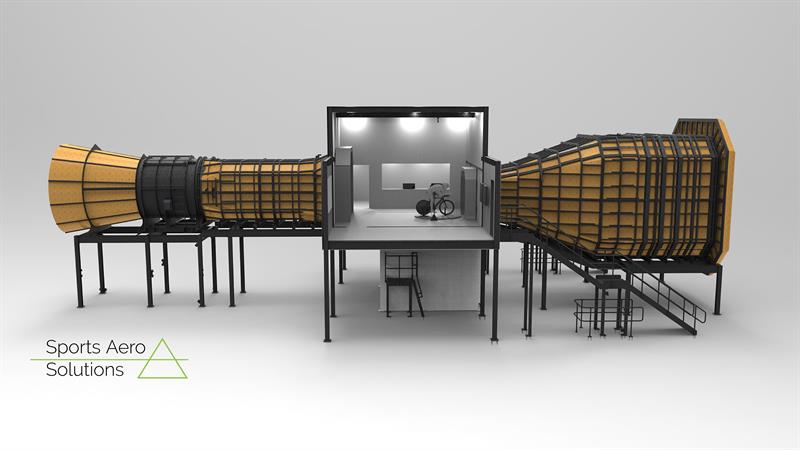
For more than a decade, Rob Lewis of TotalSim and Olympic gold medallist Chris Boardman, worked with some of the best athletes in the world to explore the effect of aerodynamics on their performance. Although hugely expensive, the advances in aerodynamics they achieved were enormous. Because of this, Boardman and TotalSim wanted to make aerodynamics exploration available to the wider sporting world. In 2015 they teamed up with Kieron Salter of KWSP to form Sports Aero Solutions Limited to design and manufacture accessible, highly accurate, sport-specific wind tunnels, with a goal of providing cutting-edge knowledge for everyone, from sports enthusiasts, to elite athletes and coaches. |








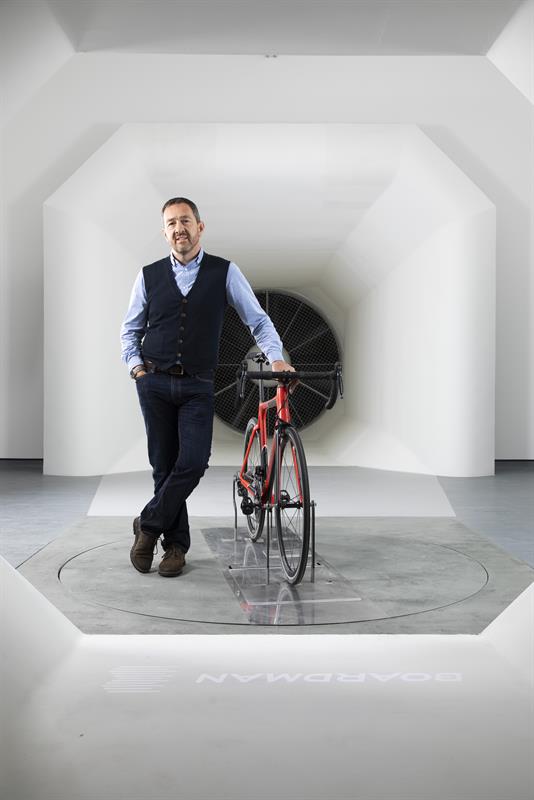 Sports Aero Solutions
Sports Aero Solutions